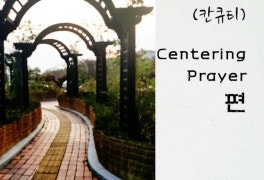Food for the Soul: A Year of Spiritual Deepening
Food for
the Soul: A Year of Spiritual Deepening
Led by Sheila Keane, Matt Lamont
and David Johnson
Residential Retreat 22-28 July
2022, online course to follow through the year.
Course objectives:
• To
respond to a deep spiritual hunger for more
• To
transform/ deepen your spiritual life
• To
establish in you an ongoing rhythm of spiritual practice
• To
enable you to identify and live into your own personal calling/ ministry
This course is offered in a Quaker
context but non-Quakers are welcome and will benefit from the focus on
contemplation and action.
Big picture of the program
• Starts
with a one-week residential retreat, then four 7-10 week online segments (total
35 weeks) over the year.
▪ Each
week there will be assigned recordings/ readings (20-35 pages), about 3-6 hours
pw. Some reading materials will be supplied, others to be purchased.
▪ Weekly
focussing queries for reflection
▪ Participants
will be supported to create ways to keep up (e.g. learning buddies, weekly
zooms, online chat discussion, etc)
▪ Each
of the four segments has 3-4 live Zoom sessions (90 minutes) with
presentations, opportunities to process material, accountability, and personal
sharing; a total of 15 Zoom sessions for the year.
▪ Weeks
with Zoom sessions will be held on a Sunday afternoon
• Opportunity
is offered for individual spiritual direction sessions during the year
• Each
participant is encouraged to have their own “mentor” (elder/ anchor group) to accompany
them through the course
• Four
‘assignments’
▪ Segment
1 e-retreat on Silence
▪ Segment
2 reflection paper on Membership & Community
▪ Segment
3 e-retreat on Celebration & Sabbath
▪ Segment
4 reflection paper on Living into Your Own Ministry
• Closing
session
Expressions of Interest
As part of the registration process, we ask you to write a
brief description of your motivations for participating in the course, so we
can ensure it is a good fit. This is also a time to have your questions
addressed before committing to the course.
A word about vocabulary
This course uses traditional
words like prayer, God, covenant community, gospel order. These words are used
because they are the vocabulary we have learned, but other vocabulary may be
needed to remove the poison from traditional language. When we say ‘prayer’,
for example, consider what happens when you are connected with nature, or when in
a gathered meeting for worship. The traditional language is loosely held and
intended as a poetic expression of the ineffable. Please know that these words
are spoken gently and translation will be encouraged.
Residential Retreat
The course opens with a 6 day
residential retreat at Silver Wattle where we will practice the daily rhythm of
learning in community. As well as supporting learning experiences, the retreat
will provide inspiration and refreshment, beginning the process of setting time
aside for the development of our spiritual lives.
Online portion of the course
The online component of this
course comprises 35 weekly topics set out in 4 segments over the year.
I. The Inward Life (9 weeks / 4 Zoom
sessions)
The inward life is the platform
on which our Quaker practice is built. Through it we develop our conscience,
our equanimity, our passion. This segment of the course explores the
development of the inward life through prayer and contemplation. As well as the
experience of early Friends, we borrow from the desert tradition and from monastic
wisdom on silence, contemplation, and its consequences in community and the way
we approach life. The section concludes with a one-day silent e-Retreat.
II. Spiritual Community (7 weeks / 3 Zoom
sessions)
This second segment of the
course situates the inward life in the context of our faith community. There
are many ways the individual and corporate aspects of Quaker life can enhance
one another. The segment is set in the unique Australian context, with small
meetings, isolated Friends, and new opportunities with Zoom. The segment
concludes with a reflection paper (3-5 pages) on membership and community.
III. Becoming Real (9 weeks / 4 Zoom sessions)
One consequence of spiritual
deepening is an increase in authenticity and self-awareness. This segment of
the course focuses on the journey of contemplative development. It can be hard
work, becoming real, and we also need to rest and celebrate our growth. The
segment concludes with a half-day e-Retreat on Sabbath and celebration.
IV. Lives that Speak (10 weeks / 4 Zoom
sessions)
As William Penn (1682) said,
“True godliness doesn’t turn men out of the world…but enables them to live
better in it… and excites their endeavours to mend it.” This final segment of
the course focuses on our call to outward action, arising from the
contemplative work from earlier in the year. The segment concludes with a
reflection paper (3-5 pages) on your own calling at this moment in time, and
invites you to take next steps to live into that call.
Closing session
The course concludes with a
final Zoom session after the final papers have been received. If there is
interest, we may also hold a short residential retreat to consolidate our
deepening process and celebrate the year.
About the course
leaders
 Sheila Keane came to
Friends in 1982,
Sheila Keane came to
Friends in 1982,
completed a 2-year Quaker formation program On Being a Spiritual Nurturer,
(School of the Spirit, Philadelphia YM) in 1996, and migrated to Australia in 1999 where she established the Quaker Basics distance learning course and led several regional meeting retreats. Sheila has been offering courses at Silver Wattle since 2009, including Sink Down to the Seed, Nurturing Elders, Clerking, Zoom Play, and Quaker Basics Online. She is an experienced online educator and is active in the life of Silver Wattle, serving as a member of the Board and the Programs & Learning Committee.
 Matt Lamont grew up in Perth (Wadjuk Noongar Country) and was
immersed in the bush of southwest Australia by his
plant ecologist father. He was also introduced to the practice of Christian
meditation at an early age by his mother. Matthew is an experienced social
worker, spiritual director and artist. He studied Christian Spirituality with
the Broken Bay Institute and has a long-standing interest in contemplative
practice and monastic traditions. Matthew moved with his wife Sophia (and now
three children) to Newcastle in 2003. He became a member of Friends in 2005 and
enjoys bushwalking, weight training and following the trials and tribulations
of the Fremantle Dockers.
Matt Lamont grew up in Perth (Wadjuk Noongar Country) and was
immersed in the bush of southwest Australia by his
plant ecologist father. He was also introduced to the practice of Christian
meditation at an early age by his mother. Matthew is an experienced social
worker, spiritual director and artist. He studied Christian Spirituality with
the Broken Bay Institute and has a long-standing interest in contemplative
practice and monastic traditions. Matthew moved with his wife Sophia (and now
three children) to Newcastle in 2003. He became a member of Friends in 2005 and
enjoys bushwalking, weight training and following the trials and tribulations
of the Fremantle Dockers.
 David Johnson is a
convinced Quaker of Conservative nature who is well versed in early Christian
and early Quaker writings, finding in both the contemplative spiritualities
that affirm the Inward Light within every one of us, and within the whole of
creation. David has led retreats widely in Australia and overseas. His
publications include: Peace is a Struggle (Backhouse Lecture 2005); A Quaker
Prayer Life (2013); and the Workings of the Spirit of God Within (2019). He
also has a short video on prayer at https://www.youtube.com/watch?v=gZxGL2GQgZ0
David Johnson is a
convinced Quaker of Conservative nature who is well versed in early Christian
and early Quaker writings, finding in both the contemplative spiritualities
that affirm the Inward Light within every one of us, and within the whole of
creation. David has led retreats widely in Australia and overseas. His
publications include: Peace is a Struggle (Backhouse Lecture 2005); A Quaker
Prayer Life (2013); and the Workings of the Spirit of God Within (2019). He
also has a short video on prayer at https://www.youtube.com/watch?v=gZxGL2GQgZ0


 14
14




